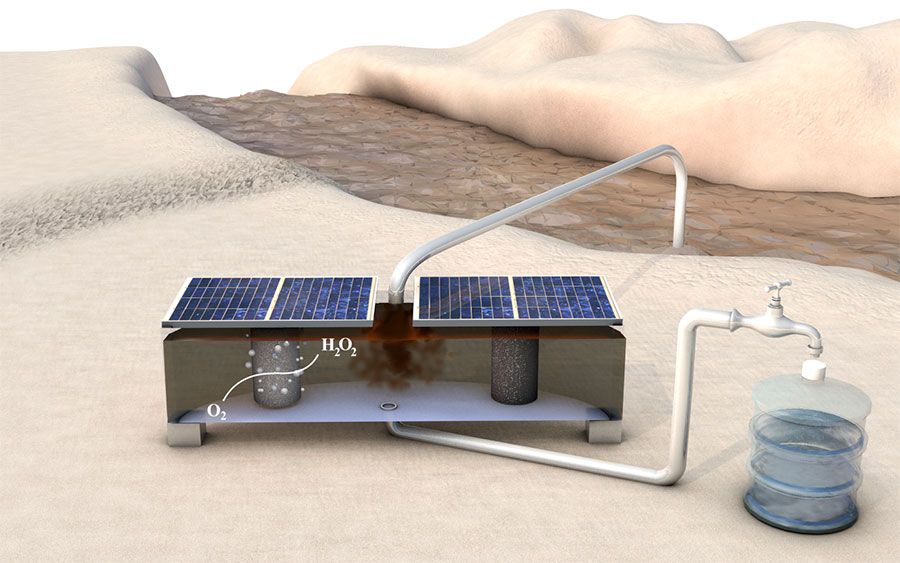H2O2 Synthesis
Limited access to clean water is a major issue for billions of people in the developing world, where water sources are often contaminated with urban, industrial and agricultural waste. Many disease-causing organisms and organic pollutants can be effectively removed from water using hydrogen peroxide. However, producing hydrogen peroxide in areas that lack large factories and intense energy resources is a challenge.
Electrochemical synthesis of hydrogen peroxide (H2O2) offers a unique decentralized process that is desirable for small-scale remote production of H2O2. Our goal in SUNCAT is to develop a sustainable way for onsite production of hydrogen peroxide (H2O2) via different routes and use it for water purification in remote areas. This is a team effort with close collaboration between theory and several experimental groups.
Using theory we design more efficient electrocatalysts using atomic scale understanding of the frontiers of existing electrocatalysts toward H2O2 synthesis. The focus is on two different electrochemical synthesis routes: (a) two-electron oxygen reduction reaction and (b) two-electron water oxidation reaction.
The proposed catalysts from theoretical calculations is then synthesized and tested under real electrochemical conditions. The most successful candidates will be selected to integrate in an actual device for on-site sustainable synthesis of H2O2.

